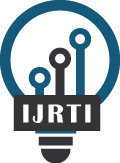|
International Journal for Research Trends and Innovation
International Peer Reviewed & Refereed Journals, Open Access Journal
ISSN Approved Journal No: 2456-3315 | Impact factor: 8.14 | ESTD Year: 2016
Scholarly open access journals, Peer-reviewed, and Refereed Journals, Impact factor 8.14 (Calculate by google scholar and Semantic Scholar | AI-Powered Research Tool) , Multidisciplinary, Monthly, Indexing in all major database & Metadata, Citation Generator, Digital Object Identifier(DOI)
|
Issue: November 2025
Volume 10 | Issue 11
Review Result and Publication of Paper within : 2-3 days
Click Here For more DetailsFor Authors
Forms / Download
Published Issue Details
Editorial Board
Other IMP Links
Facts & Figure
Impact Factor : 8.14
Issue per Year : 12
Volume Published : 10
Issue Published : 114
Article Submitted : 18499
Article Published : 7841
Total Authors : 20714
Total Reviewer : 756
Total Countries : 142
Indexing Partner
Licence
This work is licensed under a Creative Commons Attribution-NonCommercial 4.0 International License







|
Published Paper Details
|
|
| Paper Title: | Comparative Analysis of Pyrexia, Jwaara, and COVID-19: Insights into Fever Phenomena |
| Authors Name: | Dr Akhilesh Kumar Verma |
| Download E-Certificate: | Download |
| Author Reg. ID: |
IJRTI_189661
|
| Published Paper Id: | IJRTI2404073 |
| Published In: | Volume 9 Issue 4, April-2024 |
| DOI: | |
| Abstract: | Fever, a physiological response to infection or inflammation, has intrigued medical practitioners for centuries. In this abstract, we delve into the comparative analysis of three distinct febrile conditions: Pyrexia, Jwaara, and COVID-19. Pyrexia, a term derived from Greek, denotes elevated body temperature. Jwaara, originating from ancient Indian Ayurveda, encompasses fever as a manifestation of bodily imbalance. COVID-19, caused by the novel coronavirus SARS-CoV-2, has become a global health crisis, often presenting with fever as a primary symptom. Pyrexia, as understood in modern medicine, is a regulated response mediated by cytokines such as interleukin-1 (IL-1) and tumor necrosis factor-alpha (TNF-α), triggered by pyrogens. It serves a crucial role in combating pathogens by enhancing immune responses. Jwaara, on the other hand, is conceptualized within Ayurveda as an imbalance in the body's doshas—vata, pitta, and kapha—resulting in derangement of bodily functions, including thermoregulation. Ayurvedic texts classify fever into various types based on etiology, symptoms, and affected bodily systems, offering a holistic approach to its management. In contrast, COVID-19-induced fever presents unique challenges due to the pathophysiological mechanisms of the SARS-CoV-2 virus. Besides the classical symptoms of fever, patients often exhibit respiratory distress and multi-organ involvement, reflecting the systemic nature of the disease. The hyperinflammatory response, characterized by cytokine storm syndrome, contributes to the severity of COVID-19 fever and its complications. Despite their differences, these febrile conditions share commonalities in clinical manifestations and management strategies. Differential diagnosis remains crucial, considering the diverse etiologies and potential complications associated with each condition. While antipyretics provide symptomatic relief in all three cases, targeted therapies tailored to the underlying pathophysiology are imperative for optimal outcomes, especially in severe or refractory cases. In this article am trying to correlate jwara with pyrexia and covid 19 , and the management of jwara chikitsa for treating pyrexia and covid 19. |
| Keywords: | Jwara, Covid19, Pyrexia, Management |
| Cite Article: | "Comparative Analysis of Pyrexia, Jwaara, and COVID-19: Insights into Fever Phenomena", International Journal of Science & Engineering Development Research (www.ijrti.org), ISSN:2455-2631, Vol.9, Issue 4, page no.512 - 516, April-2024, Available :http://www.ijrti.org/papers/IJRTI2404073.pdf |
| Downloads: | 000205103 |
| ISSN: |
2456-3315 | IMPACT FACTOR: 8.14 Calculated By Google Scholar| ESTD YEAR: 2016 An International Scholarly Open Access Journal, Peer-Reviewed, Refereed Journal Impact Factor 8.14 Calculate by Google Scholar and Semantic Scholar | AI-Powered Research Tool, Multidisciplinary, Monthly, Multilanguage Journal Indexing in All Major Database & Metadata, Citation Generator |
| Publication Details: |
Published Paper ID: IJRTI2404073
Registration ID:189661
Published In: Volume 9 Issue 4, April-2024
DOI (Digital Object Identifier):
Page No: 512 - 516 Country: lucknow, UTTAR PRADESH, India Research Area: Health Science Publisher : IJ Publication Published Paper URL : https://www.ijrti.org/viewpaperforall?paper=IJRTI2404073 Published Paper PDF: https://www.ijrti.org/papers/IJRTI2404073 |
| Share Article: | |
|
Click Here to Download This Article |
|
| Article Preview | |
|
|
|
Major Indexing from www.ijrti.org
| Google Scholar | ResearcherID Thomson Reuters | Mendeley : reference manager | Academia.edu |
| arXiv.org : cornell university library | Research Gate | CiteSeerX | DOAJ : Directory of Open Access Journals |
| DRJI | Index Copernicus International | Scribd | DocStoc |
ISSN Details
 |
 |
ISSN: 2456-3315
Impact Factor: 8.14 and ISSN APPROVED,
Journal Starting Year (ESTD) : 2016
DOI (A digital object identifier)
 Providing A digital object identifier by DOI.ONE How to Get DOI? |
Conference
Open Access License Policy
Important Details
Join RMS/Earn 300
WhatsApp
Click Here
Click Here
Indexing Partner |
|||
| Copyright © 2025 - All Rights Reserved - IJRTI | |||






